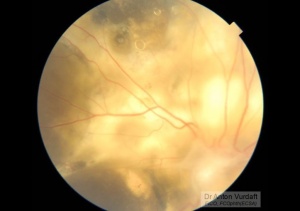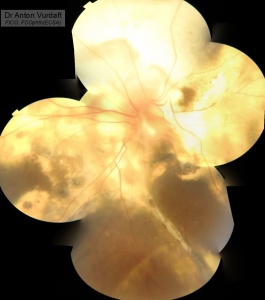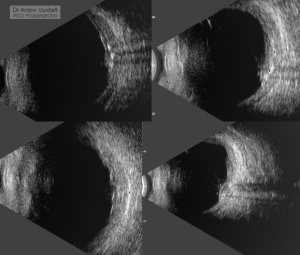Authors from the Western Africa have concluded that CT-Scan plays an important role by retinoblastoma cases in developing countries, despite its well-known carcinogenic ability by this cohorta of patients. Lack of MRI in the most remote areas justifies the use of CT, according to authors. Thus they were able to reveal trilateral retinoblastoma cases and extraocular extension corresponding good with histhopathological evaluation of specimens.
J Fr Ophtalmol. 2019 Dec;42(10):1085-1089. doi: 10.1016/j.jfo.2019.06.003. Epub 2019 Sep 24.
[Role of CT in Diagnosis and Monitoring of Retinoblastoma in Senegal]
A S Sow 1 , J M M Ndiaye 2 , A M Ka 3 , D G T Sacramento 2 , H Kane 2 , M Nguer 2 , J P Diagne 3 , A M Wane 2 , E A Ba 2 , P A Ndoye Roth 2 , P A Ndiaye 3Introduction: Retinoblastoma is a malignant tumor of neuroepithelial origin, developed from young retinal cells, occurring in infants and young children. The goal of the study was to assess the role of CT in the diagnosis of retinoblastoma at the Aristide le Dantec Hospital in Dakar.
Patients and methods: This is an 11-year retrospective study of 160 patient records in the ophthalmology department and pediatric oncology unit of the same hospital.
Results: One hundred and sixty (160) patients were recruited. The male:female ratio was 1.05. The mean age was 32.19 months. Leukocoria was the most common clinical sign, occurring in 105 cases (65.62 %). The retinoblastoma was intraocular in 97 cases (60.62 %). We saw 122 (76.25 %) unilateral and 3 (1.87 %) trilateral presentations. CT was performed in 150 children with 110 cases (73.33 %) of calcifications ; 62 cases (41.33 %) of optic nerve invasion ; 24 cases (16 %) of extraocular muscle invasion and 18 cases (12 %) endocranial extension. Associated tumors were found on CT: 2 cases of suprasellar mass and 1 case of pineoblastoma. In patients whose specimens were analyzed, histology showed 48.15 % optic nerve invasion, consistent with the CT findings.
Discussion: CT has an important role in the diagnosis of retinoblastoma, despite its recent contraindication in bilateral and unilateral multinodular forms.
Conclusion: CT is a good alternative to MRI in the diagnosis of retinoblastoma in developing countries with limited technological resources.




